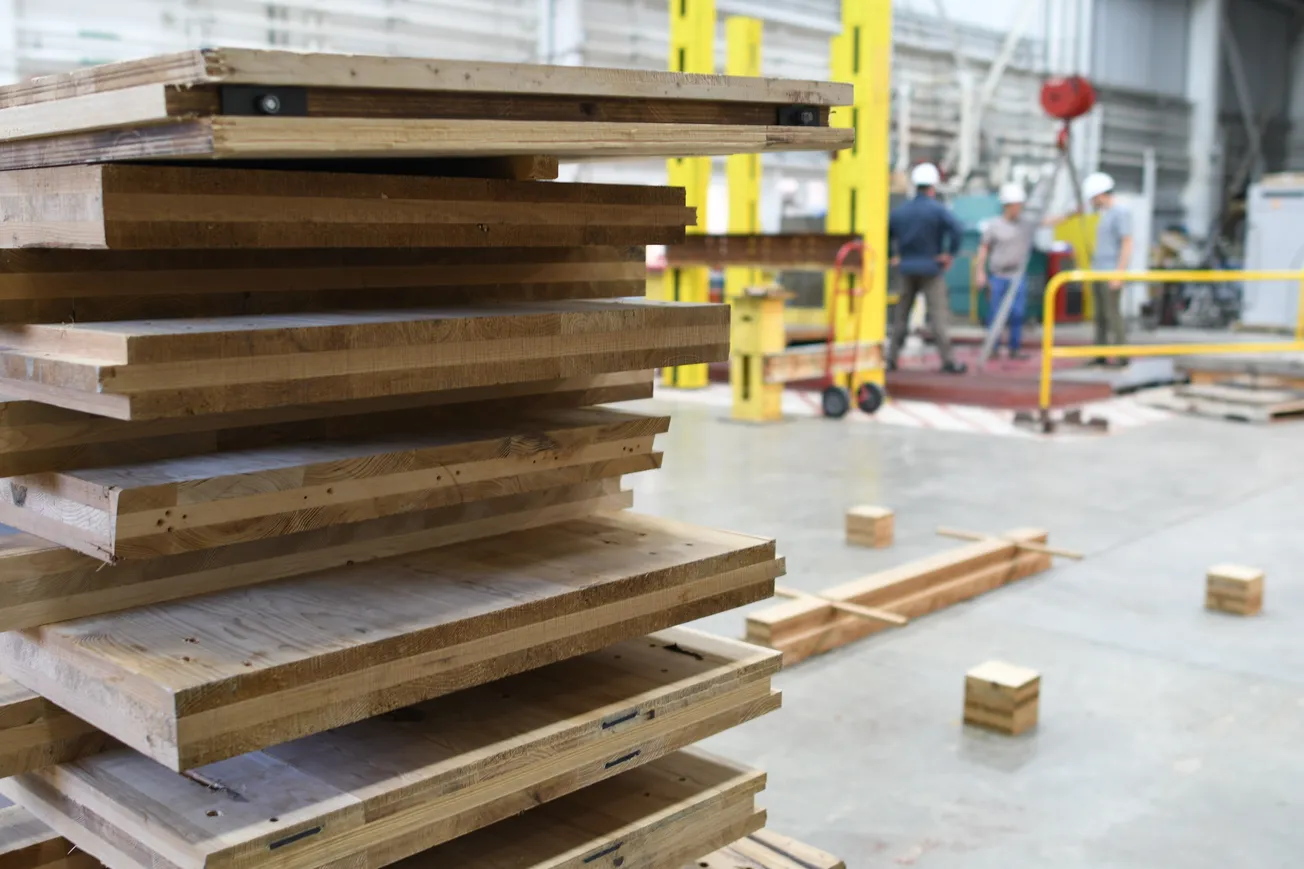Table of Contents
By Shelley Tingle and Chris Kieffer
A groundbreaking partnership between the U.S. Army Engineer Research and Development Center (ERDC) and the Composite Recycling Technology Center (CRTC) is paving the way for a new mass timber product that would be more readily available in the United States and could also meet military needs abroad.
Mass timber, which uses special processes and technologies to bind wood products together in layers, provides a strong and sustainable material with several advantages over other commercial construction materials, such as steel or concrete. However, outdated specifications and limited sourcing options have hindered its use.
Cross-laminated timber (CLT) is a mass timber product that has been available for years, but it requires high-quality lumber and unique manufacturing facilities. Using an innovative thermal modification process, CRTC created Advanced Cross-Laminated Timber (ACLT), which meets the CLT specifications while using Coastal Western Hemlock, a tree species common in the Pacific Northwest, making it much easier and more economical to source the material for U.S. projects.
“Mass timber has a lot of momentum in the Army right now,” said Dr. Pete Stynoski, research civil engineer at ERDC. “This project is trying to enable wider sourcing of Class IV materials for more resilient structures in both everyday use and in contested logistics scenarios.”
ERDC’s role in this Congressionally directed research project is to study how ACLT could be used to develop a highly durable, quick-erect building panel system for military housing.
Using its expertise in construction methods, force protection and building technology, ERDC has helped refine concepts and provided rigorous testing at its state-of-the-art facilities, including fragment impact and seismic simulations. This will allow the Department of Defense (DOD) to gauge ACLT’s performance and reliability and ensure it aligns with military requirements.
“One of the ultimate goals is to produce smaller-scale contingency-style structures that can be disassembled, put into a container and moved to another place,” Stynoski said. “Maybe there is a pre-positioned stock of these materials where we might need them in the future. Because of that thermal modification, it is resilient against biological threats. It is extremely dimensionally stable; it doesn’t have issues with moisture expansion and contraction.”
The University of Washington and Washington State University have also supported this effort through advanced modeling.
CRTC is a non-profit corporation that designs, develops and manufactures products that recycle carbon fiber scrap. Its process for producing ACLT uses composite reinforcements repurposed from aerospace industry waste.
CRTC Chief Executive Officer David Walter noted that the ACLT effort also partners with the Makah Tribe in Neah Bay, Washington to build a sawmill that will produce the needed lumber.
“We are honored to be able to collaborate with such a fine organization as ERDC on this project,” Walter said. “We are extremely excited that this project allows us the opportunity to not only provide environmental and economic benefits, but to also provide a major social benefit to a disadvantaged area. It really checks all the boxes.”
Meanwhile, Stynoski notes that thermally modified structural timber offers great potential to the military because it has the strength to be used for military construction and anti-terrorism/ force protection projects, as well as light frames designed for disassembly. And its dimensional stability during long-term storage is superior to traditional lumber, which expands and contracts over time.
Because it provides equivalent strength and durability to steel and concrete, mass timber can provide the U.S. military increased logistical flexibility in areas of the world where forests are abundant.
“There are certain parts of the world where this is another arrow in the quiver … where mass timber will be fastest to construct,” Stynoski said.
Mass timber is also environmentally friendly, emitting much less carbon in its production than steel or concrete. Its expanded use in military and civil works construction projects can play an important role in helping the federal government, Department of Defense and Army meet sustainability goals.
Dr. Robert Moser, ERDC Senior Scientific Technical Manager for Materials, Manufacturing and Structures, noted that mass timber pilot projects, including ERDC’s collaboration with CRTC, can also pave the way for new industries and markets for previously underused timber resources. And as mass timber becomes easier to source locally, its transportation burdens will decrease, making the material’s environmental and economic benefits even greater.
“These efforts can develop new markets and new industries in these communities for products that really don’t have a market right now,” Moser said. “That could be in the Pacific Northwest, or it could result from taking lessons from this project and applying them somewhere else to fortify lower-quality timber and build it into higher-performance structural material. I think this really has the potential to build up new markets.”






